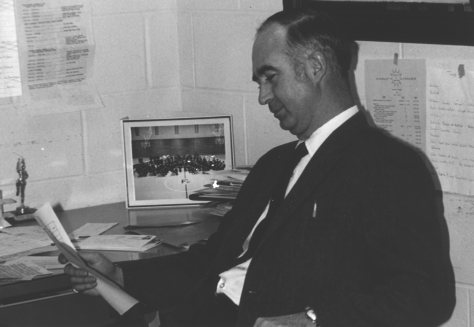Described as “private, nonprofit, coeducational, four-year schools with five thousand or fewer students,” liberal arts colleges (LACs) are often "adhere to some ethos associated with being small or relatively small in size—e.g., a teaching (vs. research) orientation, a liberal-arts mission, individualized student attention” (Amorose, 2000, p. 85). Many LACs have recently added select graduate programs and developed into "liberal arts universities" while keeping a liberal arts college mission. While LACs are sometimes associated with academically and financially privileged students (especially in light of the high tuitions at many of these private institutions), the wide range of these types of schools often belies this assumption. At my own institution, for example, roughly two-thirds of students receive financial aid and our average ACT score is more in the average range at 23.7. Despite the costs, many students still choose LACs like mine for the personalized attention and greater opportunities for student involvement.
Because of their small size and emphasis on cultivating students as generalists, Carol Rutz (2006) suggests LACs are frequently characterized as strong sites for writing, whether such instruction is explicit in designated coursework or implicit in the entire curriculum (p. 60-61). This integrated focus on writing is inherent the history and tradition of the liberal arts college.
Bob Connors (1997) points out that prior to the American trend toward establishing universities in the 1870s and 1880s, the existing colleges offered a “classical curriculum, with its emphasis on preprofessional generalism and ‘mental discipline’” in undergraduate courses (p. 177). As distinctions between liberal arts colleges and research universities grew in response to demand from scholars returning from study abroad, LACs continued to maintain the goal of generalism, and writing developed as the catalyst for integrating knowledge from a variety of disciplines. Because “the liberal arts tradition holds that learning is coming to know, and that knowing is in its end an act of power,” the liberal arts student used writing as a tool to explore, debate, challenge, and synthesize a variety of disciplines ranging from English to economics (Lloyd, 1995, p. 100).
During the 19th century, Peter Vandenberg (1994) notes new universities purposefully distinguished themselves from LACs in the press and in campus publications using the following contrasting characteristics:
university |
college |
|---|---|
national |
local |
research |
teaching |
theory |
practice |
science |
technology |
truth |
opinion |
objectivity |
subjectivity |
substance |
style |
literature |
composition |
The end result of these associations caused the growth and maintenance of a hierarchy that continues to privilege the research university over the LAC. Still, some divisions remain less clear than the above hierarchy might indicate.
For example, composition, a skill often associated with the historical liberal arts tradition in the above schema, also carried over to these newly established research universities even if literature was privileged as subject of study (for a variety of perspectives on the composition-literature “divide,” see Bergman & Baker, 2006). The association of liberal arts colleges with composition in the previous schema may indicate maintaining the subordinate relationship between university and college, as an explicit composition curriculum is clearly present at many research universities. Writing in the research university evolved throughout the 19th century, and by 1885 Harvard had established a required first-year composition course that other universities used as a model for today’s first year writing programs, including the current program at The University of Findlay. Despite the now established presence of writing, Connors acknowledges, “the composition-rhetoric of the schools was different from that of the colleges, which was not that of the universities” (p. 7).
In research universities, the enterprise of writing was reconceived as “a set of skills, a tool of scientific method rather than an epistemic activity itself” (Vandenberg, p. 3). In contrast, “Essays are assigned,” in courses at many LACs, “to help (or force) the students to an imaginative control of the material of the course. To ask for an essay is to ask for the invention of an idea whose formulation or at least development is new” (Connelly & Irving, 1976, p. 669). Faculty across disciplines in most LACs generally promote a culture where writing is valued in a variety of forms (Rutz p. 61), and the embedded culture of writing appears to create stronger writers. In fact, contemporary studies such as the 2005 Association for Study of Higher Education report suggest that the liberal arts student tends to enjoy the higher-order cognitive thinking skills associated with writing, and demonstrates greater fluency, style, and skill during writing tasks “than students at other types of universities” (p. 46). While results were measured in the study using the writing test of the Collegiate Assessment of Academic Proficiency (an exam developed by the American College Testing Program), and this standardized test is just one measure of student aptitude, it does illustrate a link between highly developed writing skills and a liberal arts education.
